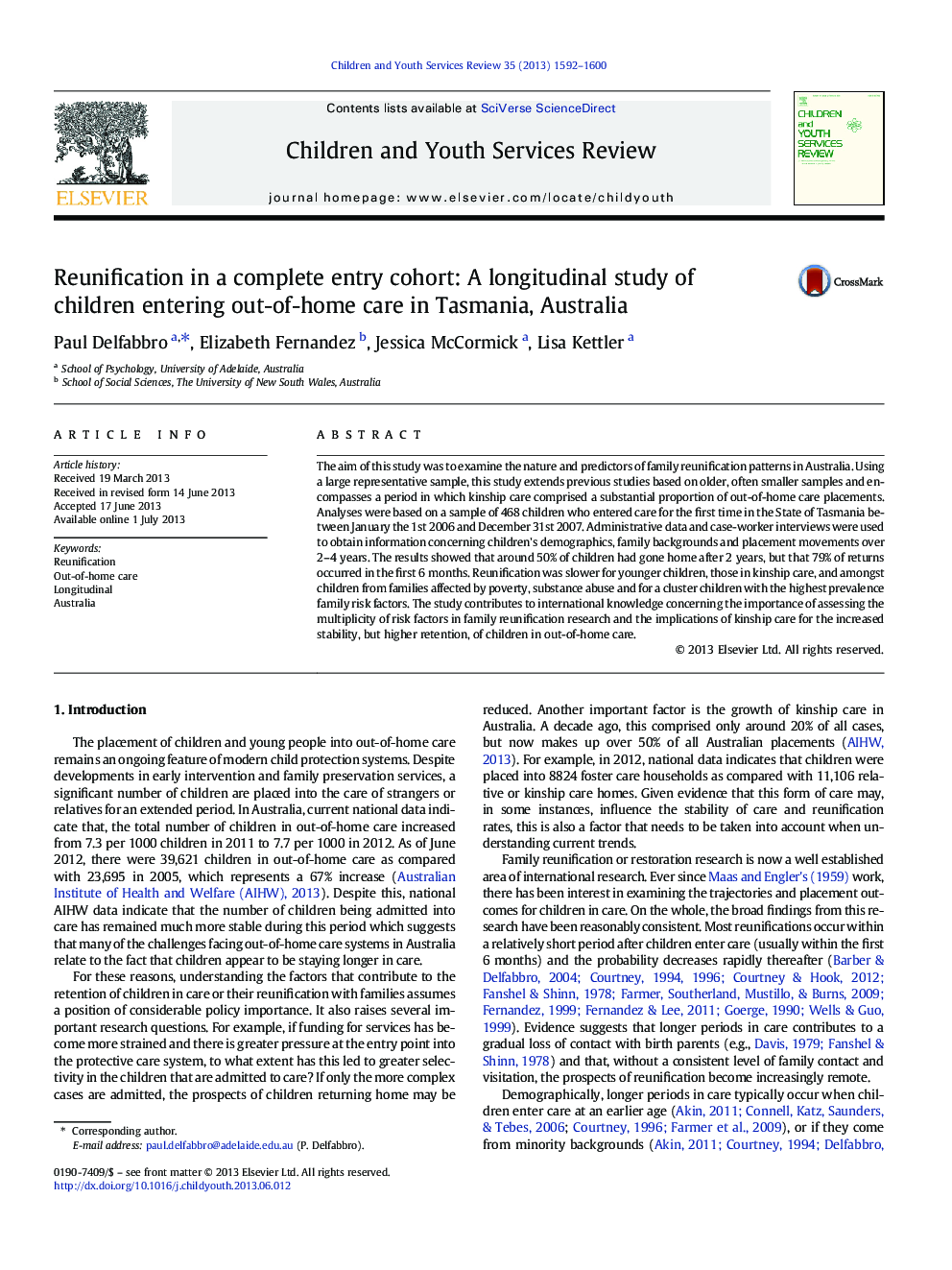| Article ID | Journal | Published Year | Pages | File Type |
|---|---|---|---|---|
| 10311629 | Children and Youth Services Review | 2013 | 9 Pages |
Abstract
The aim of this study was to examine the nature and predictors of family reunification patterns in Australia. Using a large representative sample, this study extends previous studies based on older, often smaller samples and encompasses a period in which kinship care comprised a substantial proportion of out-of-home care placements. Analyses were based on a sample of 468 children who entered care for the first time in the State of Tasmania between January the 1st 2006 and December 31st 2007. Administrative data and case-worker interviews were used to obtain information concerning children's demographics, family backgrounds and placement movements over 2-4Â years. The results showed that around 50% of children had gone home after 2Â years, but that 79% of returns occurred in the first 6Â months. Reunification was slower for younger children, those in kinship care, and amongst children from families affected by poverty, substance abuse and for a cluster children with the highest prevalence family risk factors. The study contributes to international knowledge concerning the importance of assessing the multiplicity of risk factors in family reunification research and the implications of kinship care for the increased stability, but higher retention, of children in out-of-home care.
Related Topics
Health Sciences
Medicine and Dentistry
Perinatology, Pediatrics and Child Health
Authors
Paul Delfabbro, Elizabeth Fernandez, Jessica McCormick, Lisa Kettler,
